Trainees report:Kanazawa Training Program:October 9, 2019
Miguel Ángel Echeverría Tager
(2019/10/10)
For two days, Wednesday and Thursday, October 9 and 10, we were taken to the streets of the historical quarters of Kanazawa. As part of the workshop, we were guided on a tour around the main touristic attractions of this city: The Kanazawa Castle, the Kenroku-en garden, Naga-machi, the samurai house district, and Higashi and Nishi Chaya, the east and west geisha districts. Once again, Ms. Risa Ogata lead the way and Mr. Alejandro Falla, a Guatemalan Kanazawa student interested in the promotion of touristic attractions, accompanied us and served as a translator.
The tour began with a visit to Kanazawa´s City Hall, where Ms. Masako Ogawa presented to us a conference on the development of tourism in Kanazawa. The secretary focused on the research and the planning that the city has taken to attract tourism. She presented statistics of foreign and local visitors, presented the distribution of visitors according to their country of origin, and showed how numbers have increased since new strategies were adopted. Focusing on municipal policies, efficient planning, effective advertisement campaigns and sufficient facilities to cater for tourists, she demonstrated how a city like Kanazawa could grow around tourism.
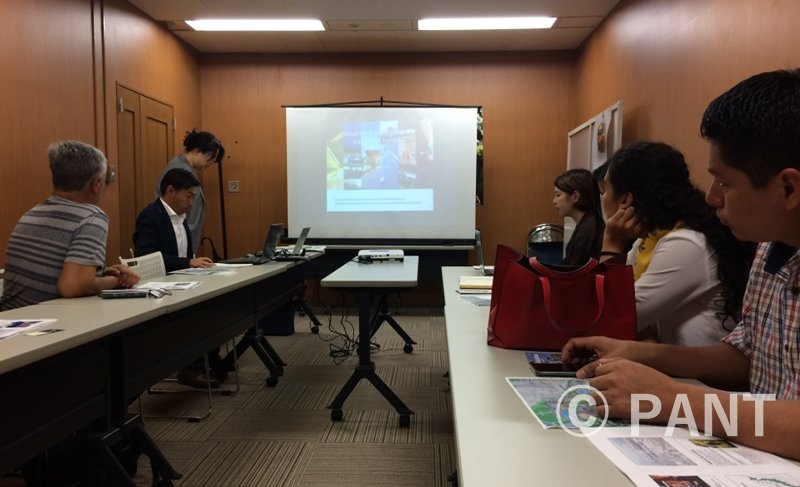
The group of trainees listening to Ms. Masako Ogawa´s presentation
After a light lunch, we were all taken to see the Kanazawa Castle Park and the Kenroku-en garden next to it. A tour guide explained to us the history and the structure of the castle and of the gardens as we walked through the park. In touch with nature and in an outdoor setting, Ms. Cristel Orellana, the trainee that represents Tikal National Park and works in the preservation of natural patrimony, seemed to be the most receptive to the guide´s explanations on how they monitor and take care of trees around the garden. She definitely enjoyed this visit to a park that she considers brings together the artistic sensibility of humans with the intrinsic beauty of nature.
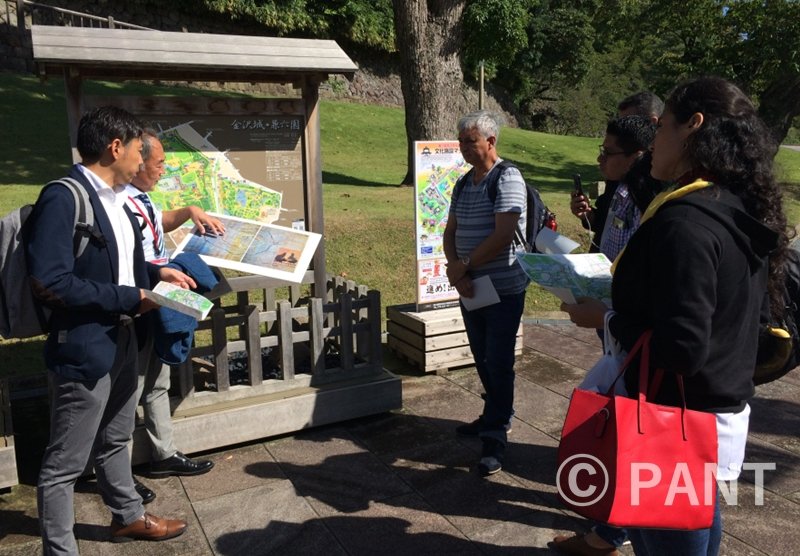
The group of trainees about to enter the Kanazawa Castle Park

The group of trainees listening to an explanation of the castle´s architectural design
After walking up and down the Kanazawa Castle Park, a remnant from another time in the heart of a modern city, we visited the Ishikawa Prefectural Museum of Traditional Arts and Crafts. There we expected to see the gold leaf crafts for which Kanazawa has been know for a long time, but we found clothes and tableware displayed on the museum far more attractive. Ms Ingrid Morales, the trainee that represents the community of Ixlu was left with her mouth agape when she saw the most detailed and most sophisticated kaga embroidery and kaga yuzen designs, next to the finest Wajima lacquerware and Kutani porcelain. Hand-dyed and hand-painted silk seemed to her more like a work of art than like a piece of clothing she would wear. If I had these back home—she said, referring to a beautiful silk kimono, but also to the little lacquered bowls in display— I would just put them in a display case and show them to people that visit me. I would never wear clothes like these or use bowls like those to eat. Not even in the fanciest of parties!
We all realized then that it is not just the past and the present that live side by side in this city, art and utility are also inseparable in Japan. Inevitably, we all compared the situation with Guatemala and with the case that the Tikal National Park Touristic Corridor presents to us: the archaeological past hand in hand with the present, beautiful textiles woven by expert women and proudly worn by them in the Guatemalan highlands.
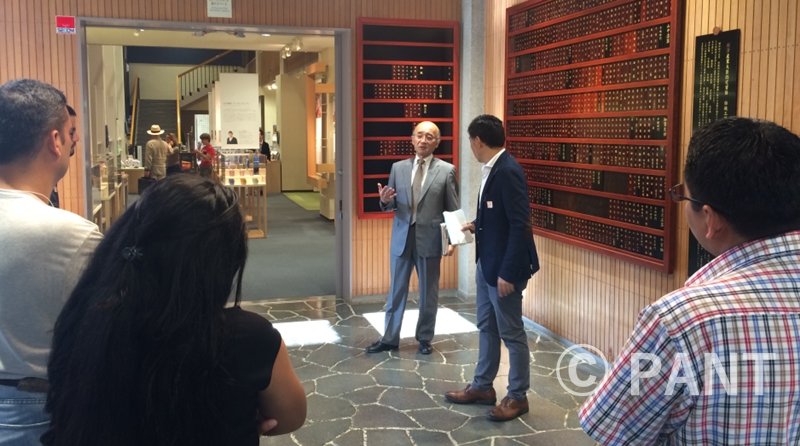
The group of trainees at Ishikawa Prefectural Museum of Traditional Arts and Crafts
We finished the day with a visit to Higashi Chaya, one of the geisha districts that are preserved and still offer the services of geishas. A very friendly guide explained to us what geishas were and how samurais and feudal lords were entertained by them in this district. Being aware that we were interested in visiting these quarters for more reasons than just tourisms, as we walked the streets, he also explained the different categories that institutions in charge of preservation have established to organize them according to their importance.
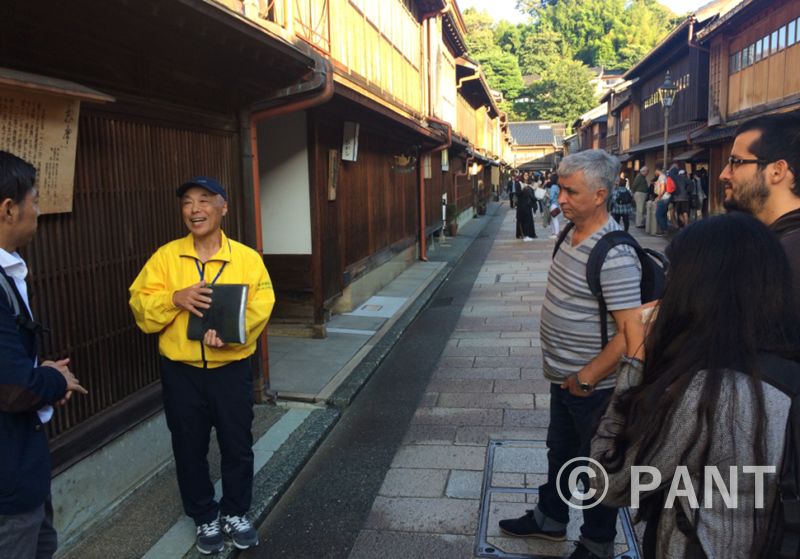
The group of trainees at Higashi Chaya´s main street
The last highlight of the day´s tour was a stop at Hakuza, a gold leaf craft store where there is a gold storehouse in the backyard. The glittering light that shines out of that storehouse was something could have never imagined and will never forget. Is this really gold? It is gold leaf, but it is equally shocking.
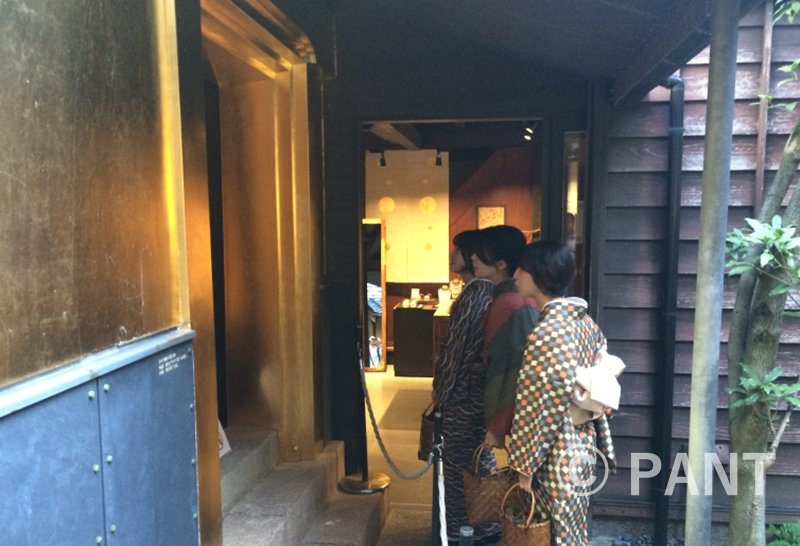
Three local tourists dressed in a traditional Japanese kimono admiring the gold storehouse
